You Ink Tattoo Discovery App
Side project using discovery and design research skills
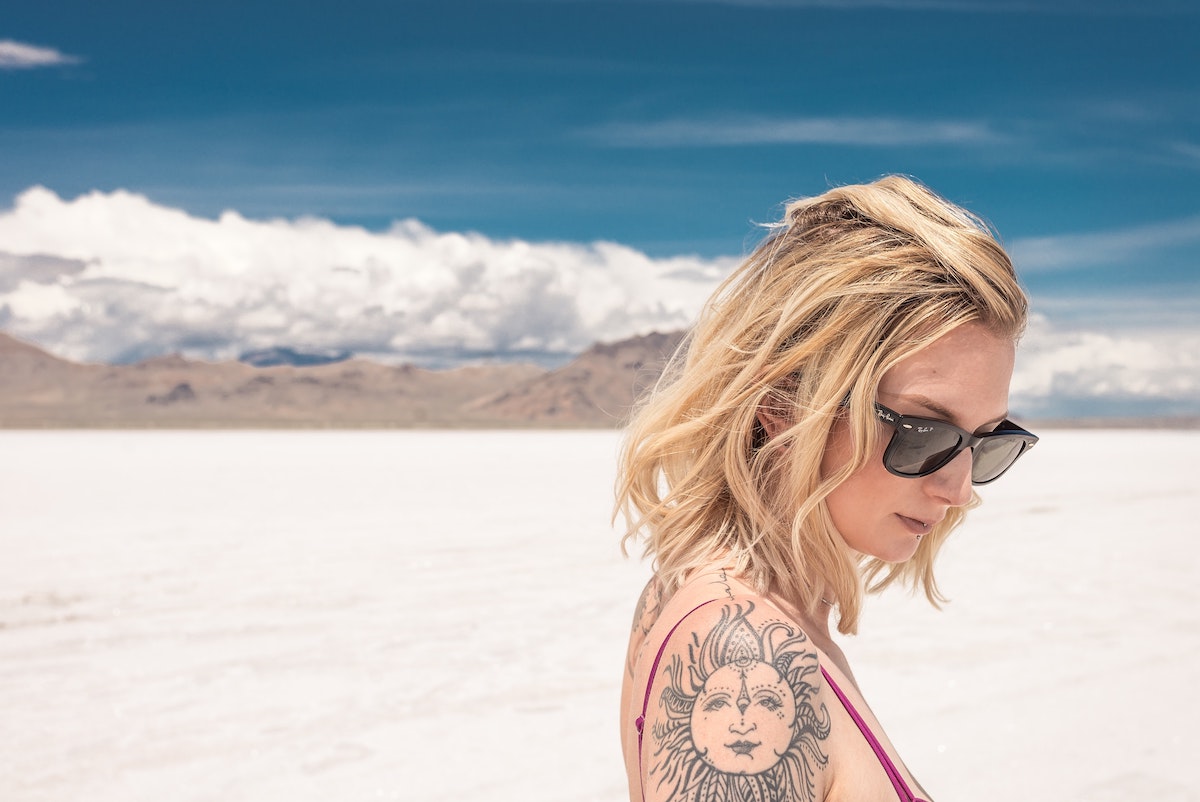
Tattoos combine physical, psychological, anthropological and societal optics. It’s a global cottage industry with thousands of micro-suppliers servicing their local area. Whilst they build a loyal customer base, it’s an infrequent purchase with a mix of spontaneity for some and considerable research for others.
The course brief was to make sense of what was out there, both on and off-line, find a market opportunity in the form of a web responsive app and follow through with full suite of UX methodologies to arrive at a credible solution.
The business brief clearly mandated that any investment in product and marketing was to be measured against a return through mixed channels, both from the app user and from the suppliers (artists) for showcasing and generating appointments.
My Process
Understand
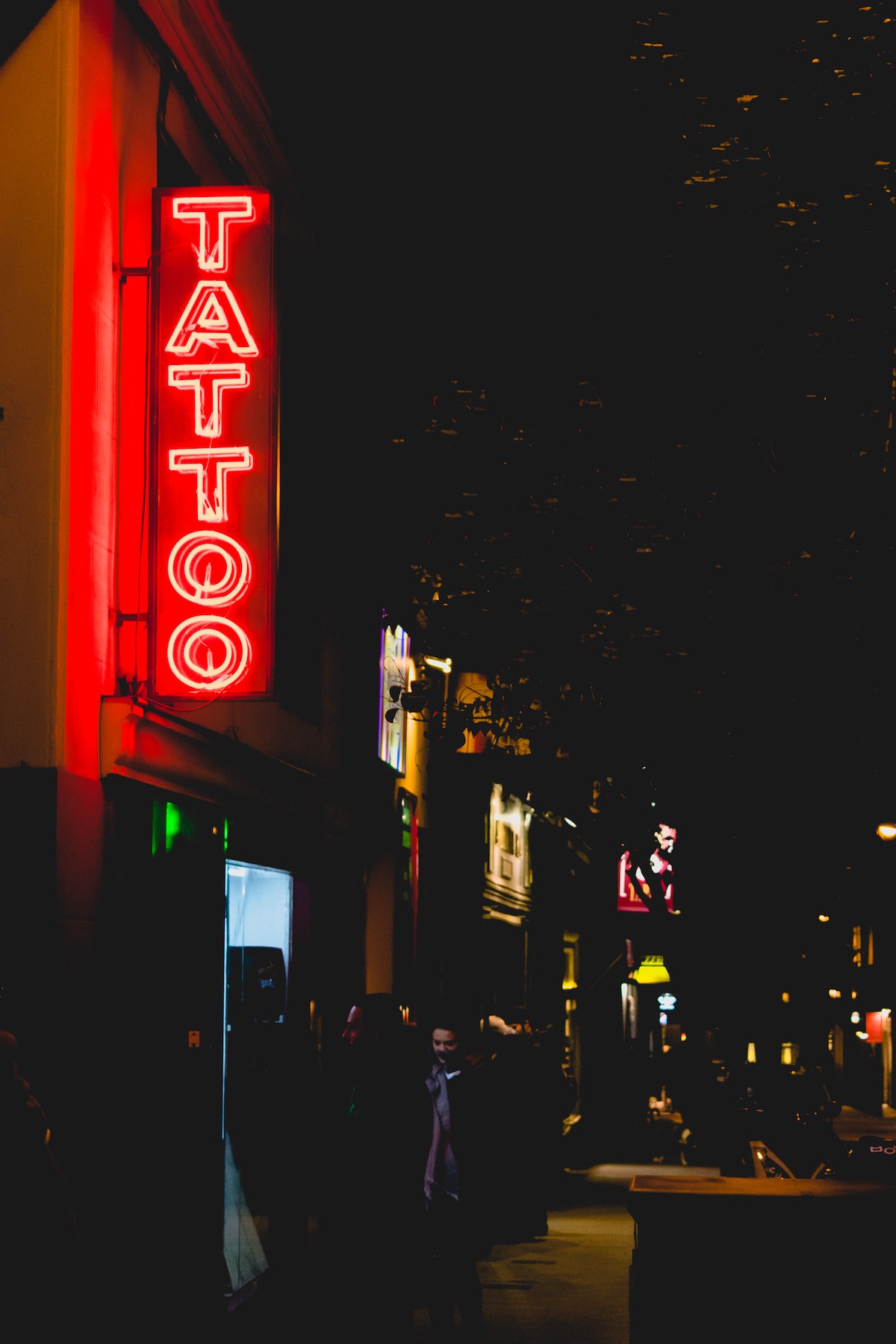
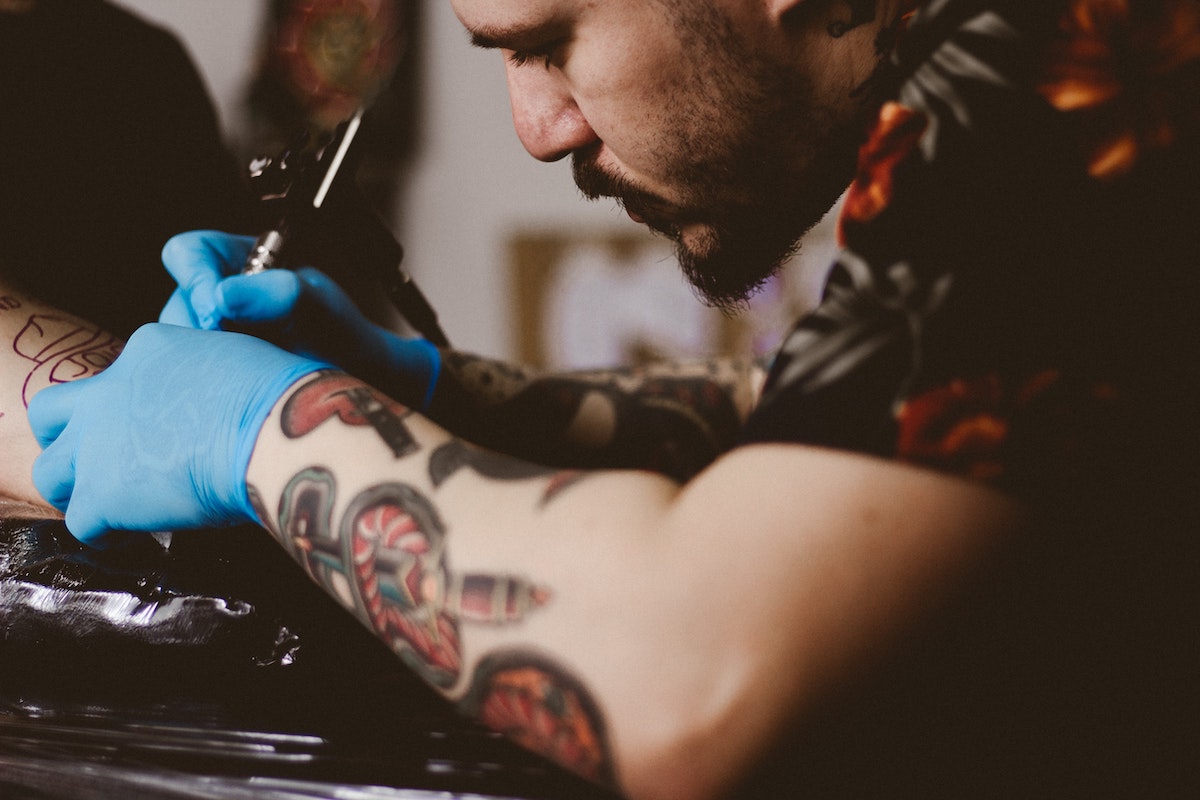
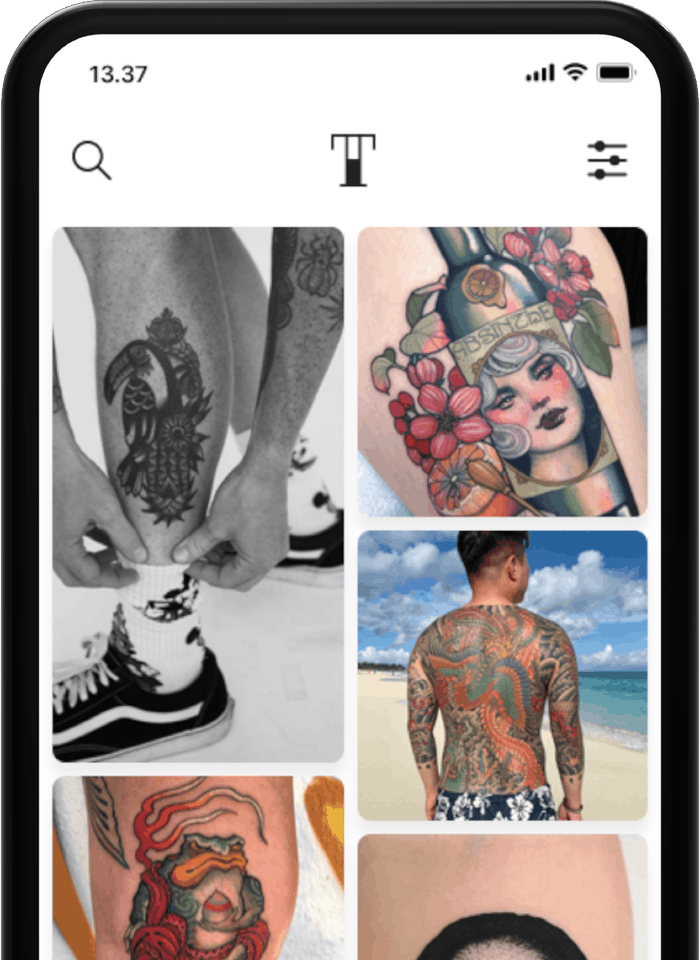
I don’t have a tattoo. I didn’t know much about tattoo culture. I didn’t know many people that have tattoos. But I’m not an alien landing on Planet Tattoo. I have had biases about ‘those’ people who have tattoos. I owned that.
Now I know a lot about tattoos, tattooists, tattoo-seekers and tattoo-finders. And I left my biases by the door.
- Media immersion, print, online forums, videos, academic studies, searching for local artists (proximity, accessibility, pricing)
- Open listening sessions with family, friends, friends of family and family of friends (opinions, experiences, stories)
- A full competitive review including business metrics (Crunchbase, business media) heuristic analysis and performance analytics on the largest international player in the segment.
Observe
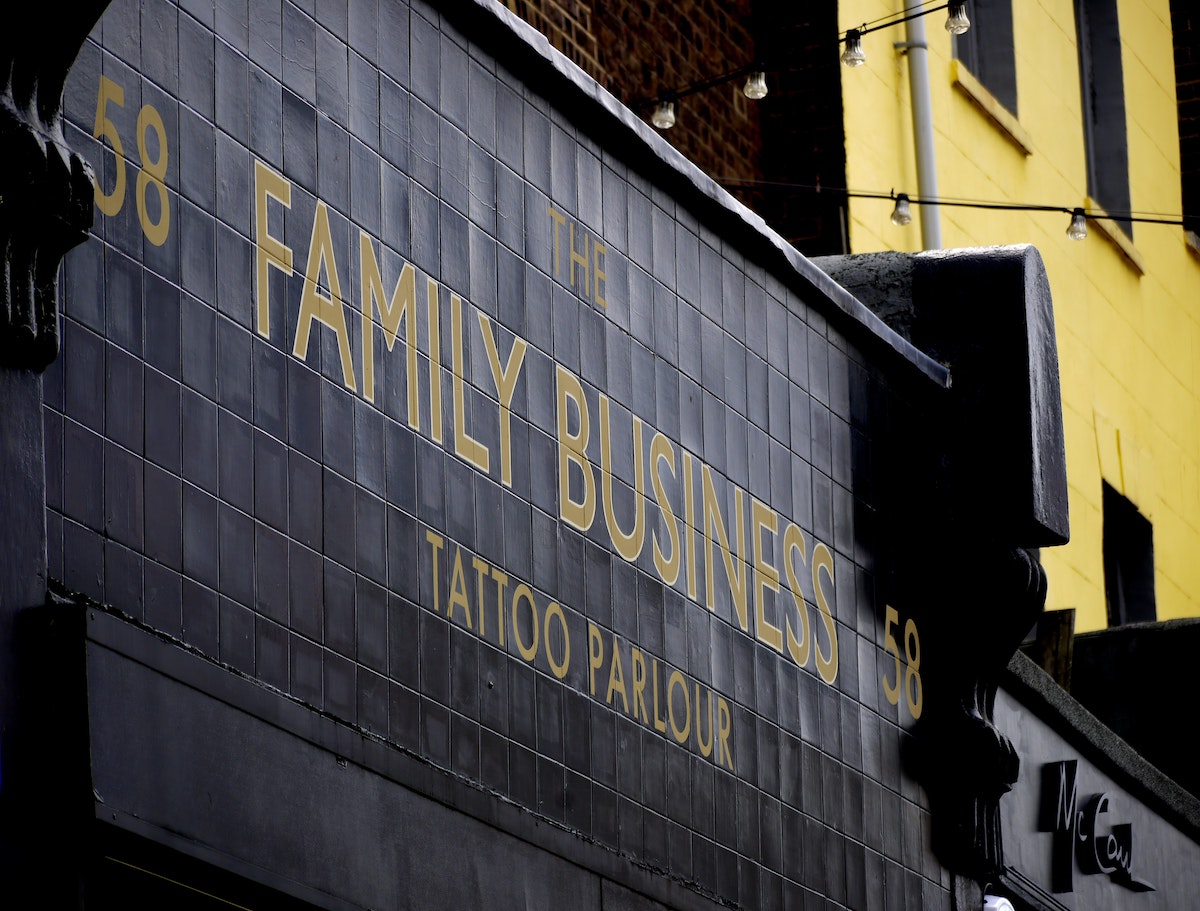
Tattoo-finders enter the funnel from a wide angle but ultimately, they all eventually have to meet someone with a needle.
I befriended the team at a local Tattoo Parlour that served a wide demographic (professionals, workers, students) who initially allowed me to interview them and eventually allowed me to observe their process from a ‘punter’ coming in for the first time (‘feelers trips’) through to execution of art.
I also had a ‘walk through’ session with a couple of young adults, one of which was excited but nervous, the other braver and thinking of the ‘next one’. By storifying the process, the opportunities for an App start to identify themselves.
This formed a narrative from which proto-user stories started to form.
POV
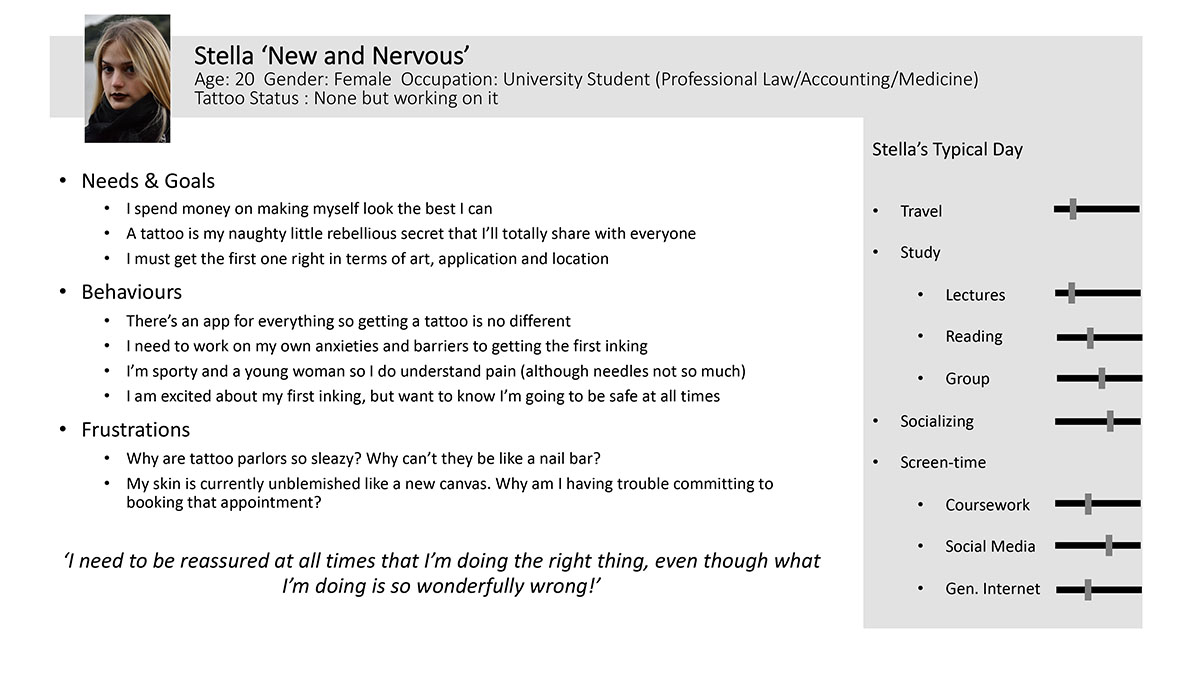
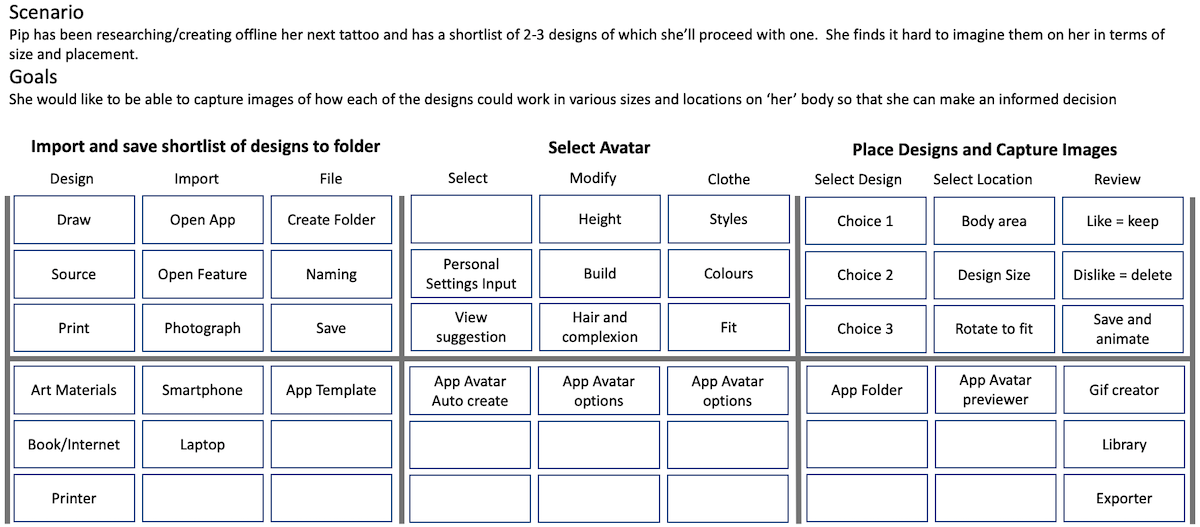
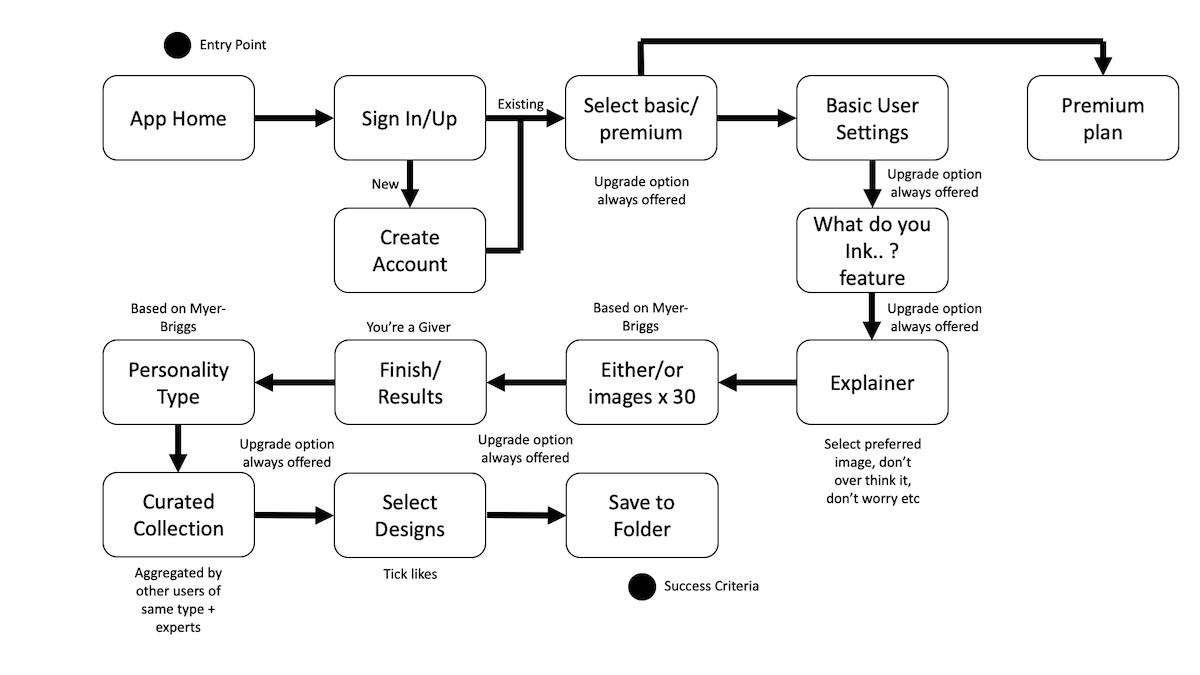
For the App to be both useful and usable, it had to help the user get a specific job done.
By creating a small group of personas that form a substantial business opportunity for the App, with each persona representing a user at a key stage in their process, I was able to form a strong understanding of the psychological state/mental map the app would be working with.
Having conducted a Google Forms survey, 4 problem areas were becoming clear;
- Overwhelming choice
- Personal expression
- Fear of getting it wrong
- Finding and then trusting an artist
Ideate
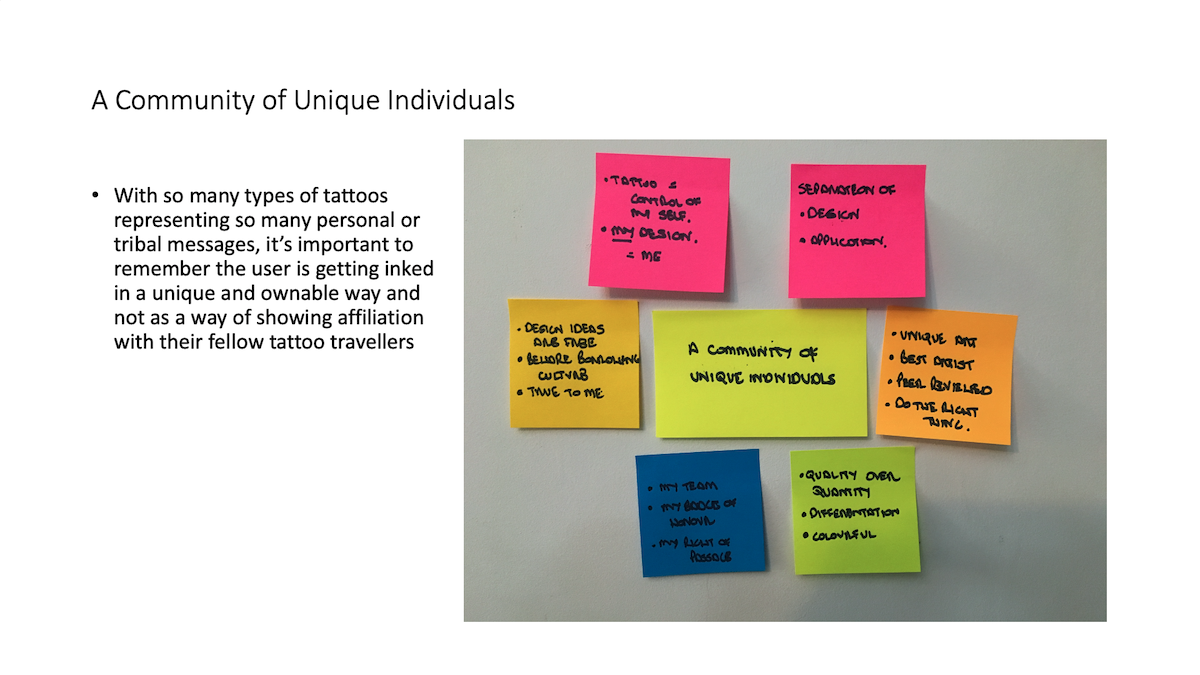
Potential solutions to the problem areas were developed that;
- Allowed the user to submit themselves to a hybrid Myer Briggs personality test and thereby find their ‘type’
- See the art presented in a lifestyle context and not just as drawings or close-up body images
- Create clear stages for the user decision process, some trial and error without consequences
- Make the app robust and supported by experts who have the user’s best interests in balance with their desire to do something ‘new, daring, scary, life-defining’
Prototype
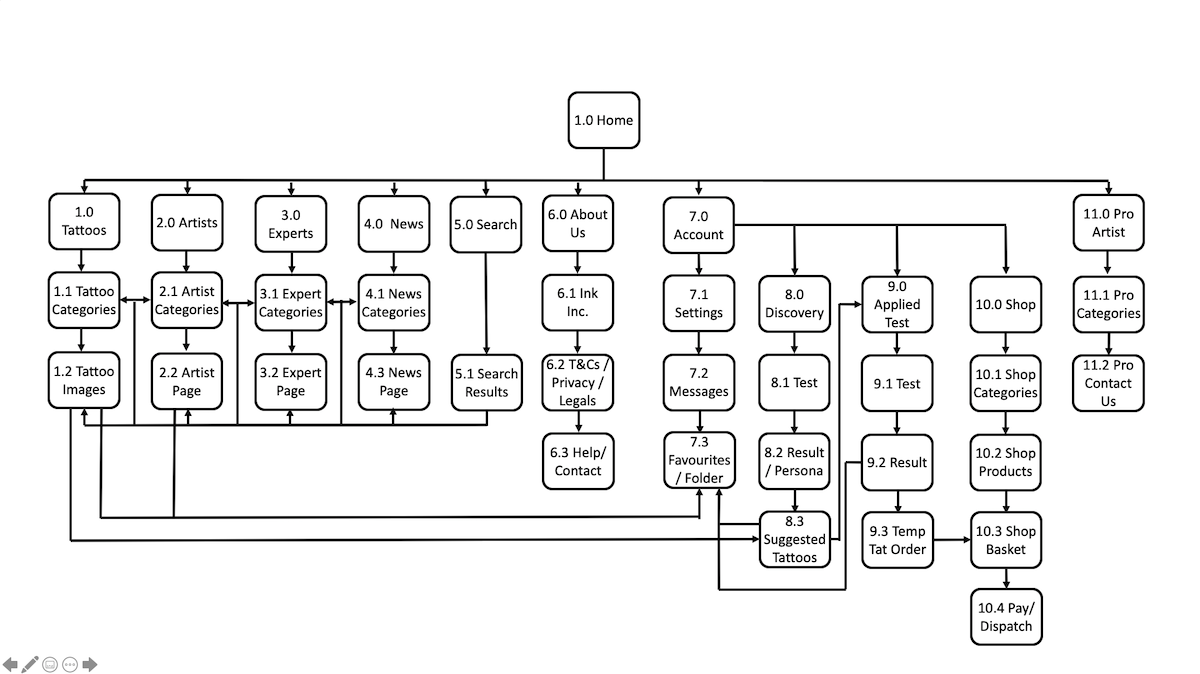
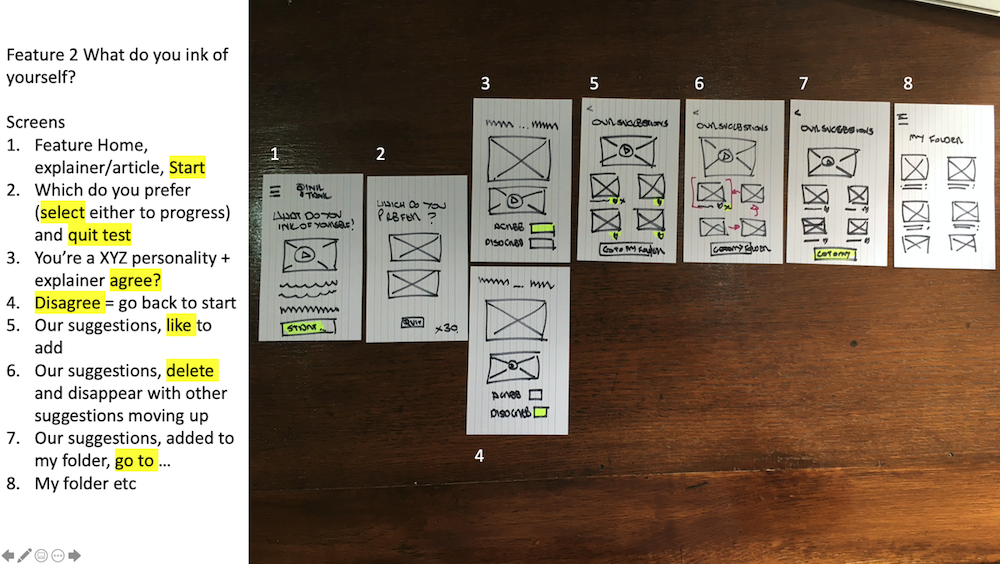
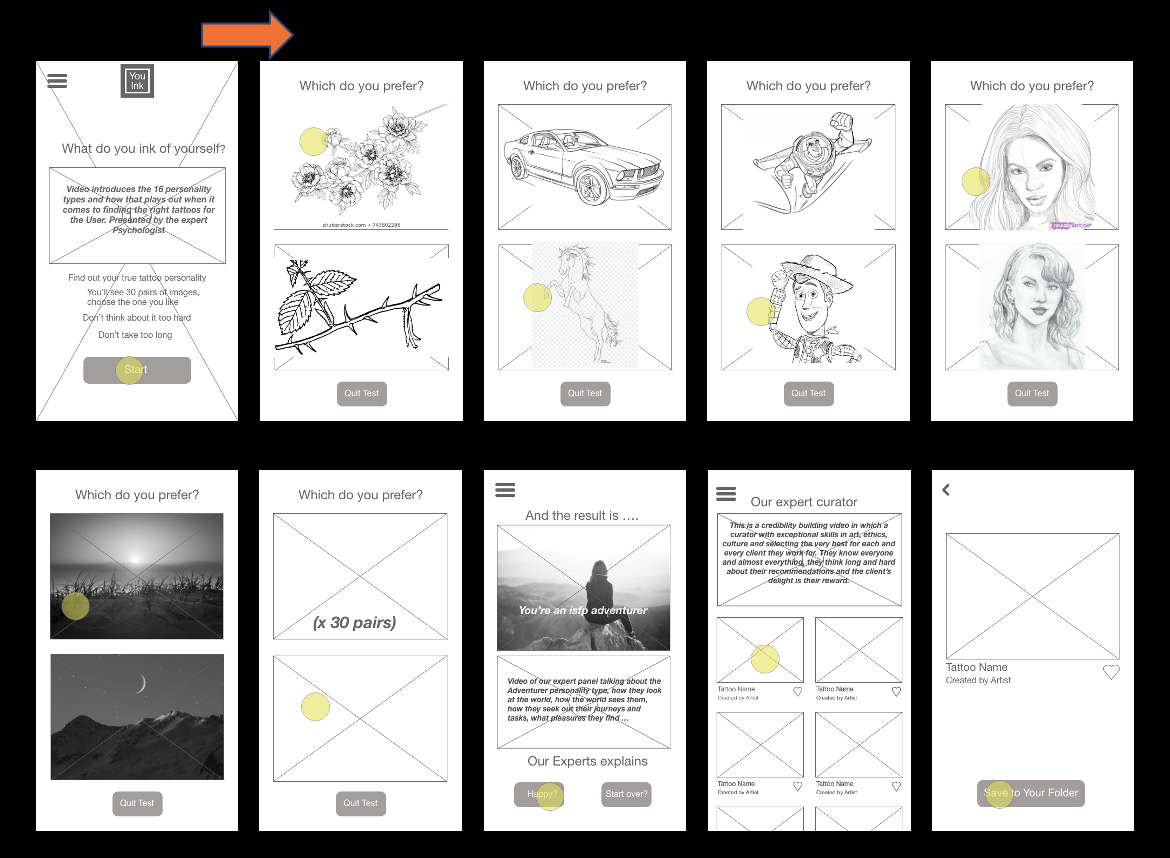
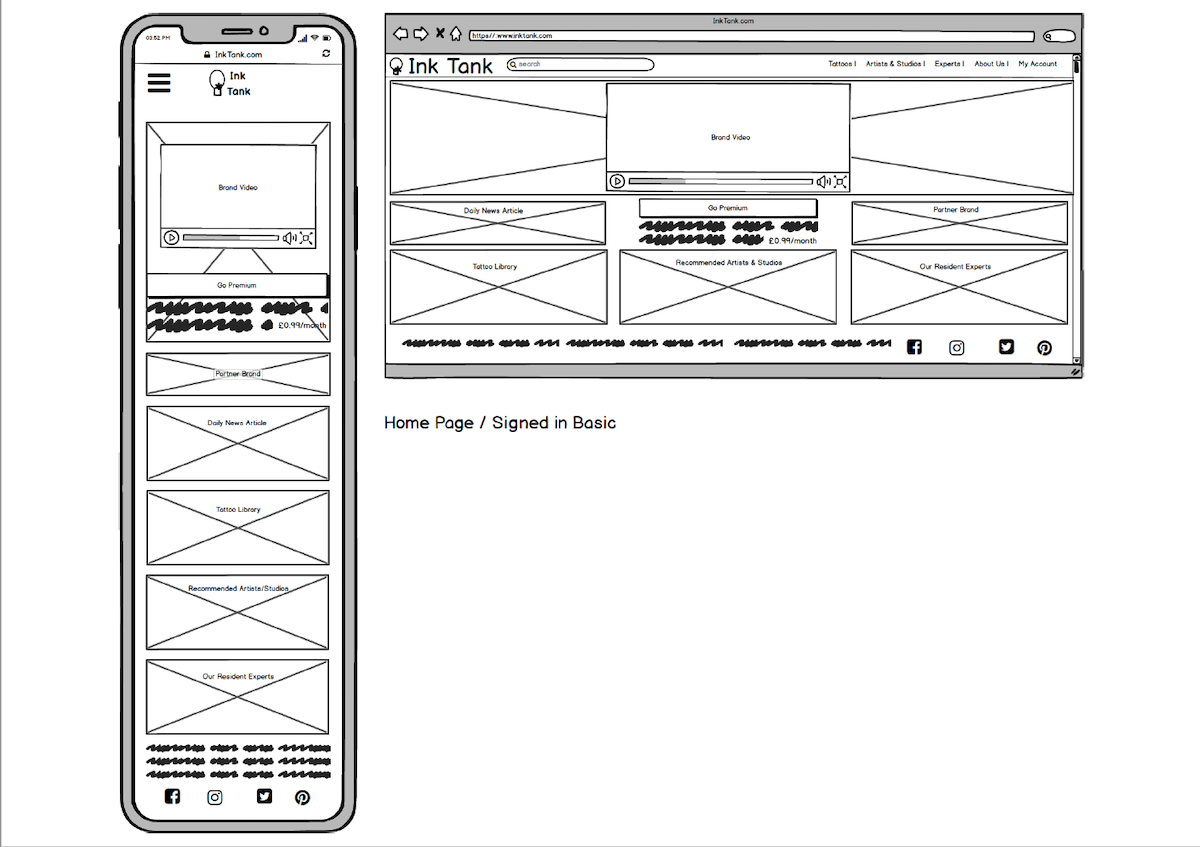
From super-basic Post-It™note iterations ...
Through a card sorting exercise (OptimalSort®) ...
Then wireframe mock-ups with some interaction (Basamiq®)
Finally using Adobe XD® as the core prototyping tool to produce multiple versions of each feature as low, then mid, then high fidelity clickable prototypes.
Test
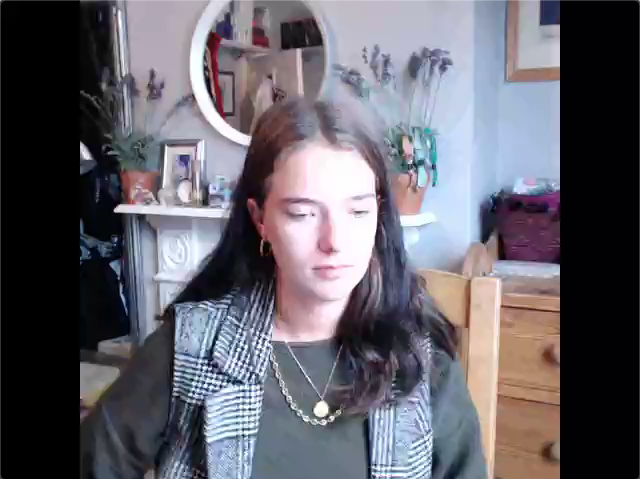
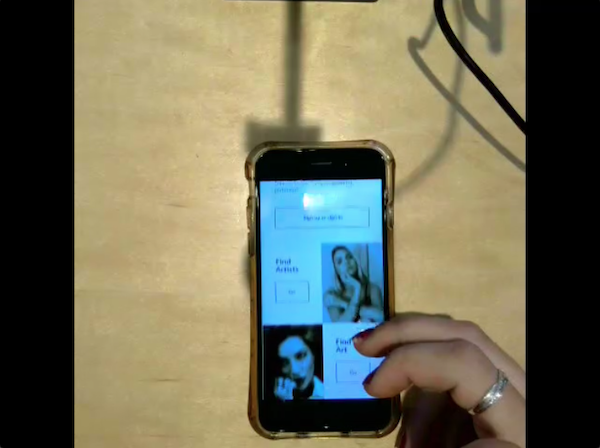
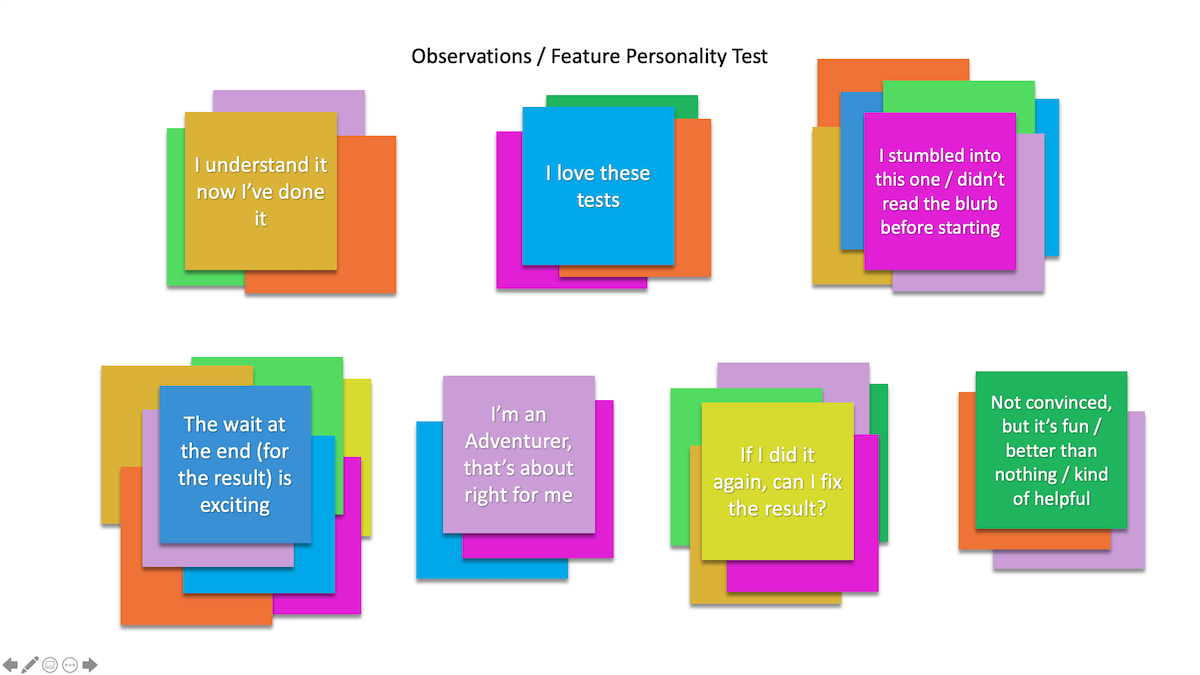
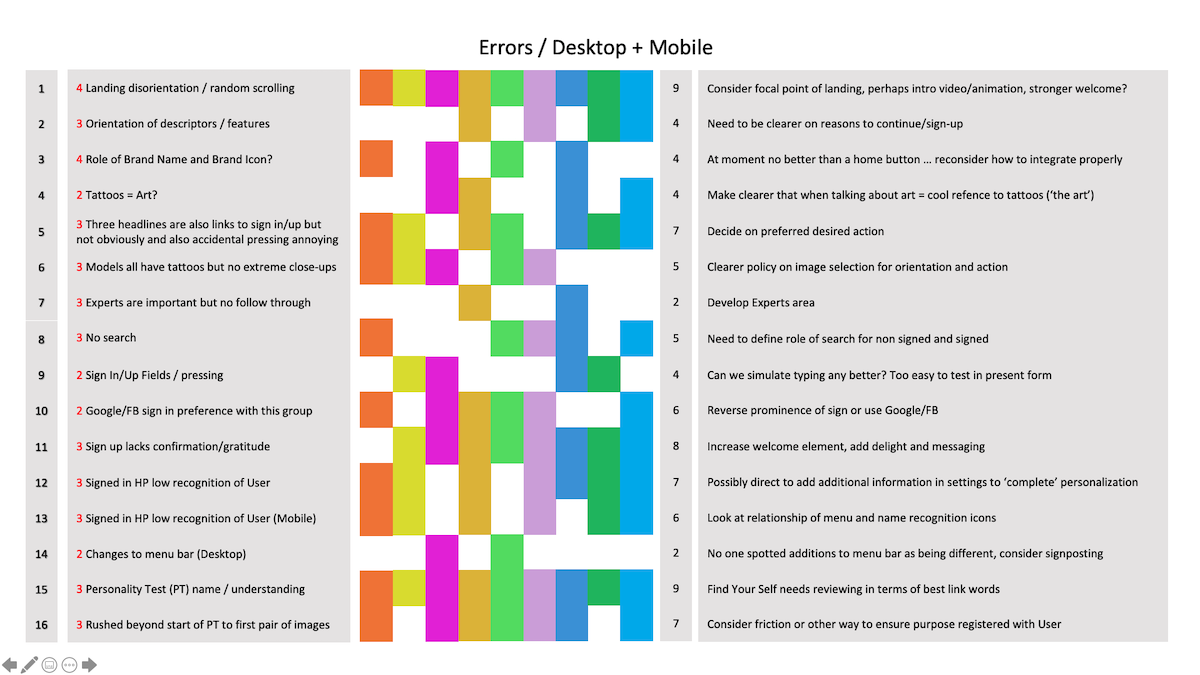
Using my newly created In-Person Moderated Usability Test Lab, I recruited 8 participants that broadly covered the user bandwidth and conducted recorded testing on the app presented as either mobile or desktop versions.
After giving each the chance to familiarise themselves with the app (first impressions), they were set 3 specific tasks;
- Find out which tattoos fit your personality type
- Sign-up for an account
- Select a tattoo and buy a temporary (2 week) version of it to test out.
Having reviewed, transcribed, then clustered actions (facial and finger taps) and comments (narrative) into affinity maps, summarised the research using an Error Rainbow spreadsheet and then, for ‘team’ usability, a key action report that separated critical steps from backlog tasks.
The most important change drawn from the research was to bring the personality test out from the centre of the IA and make it work hard as the on-boarding tool, providing early satisfaction and engagement with the users before sign-up.
Tell Story
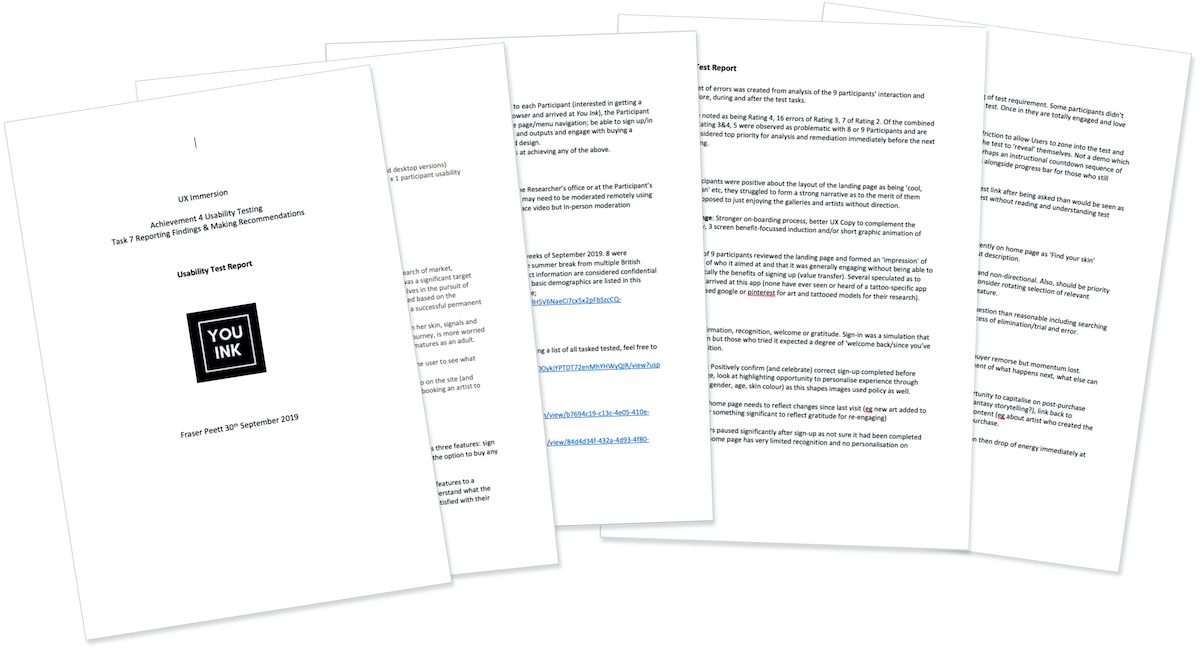
The business brief is to generate direct income from tattoo-seekers, and from tattoo artists through listings and commission on introductions.
There is already a mature off-line market (who use social media to promote and connect) and the largest competitor has been well funded in its attempt to become the default app of choice.
Discovery research established;
An opportunity for an app designed to focus on the new entrants to the world of skin art, young adults, digital natives, whose first tattoo is not about external surface decoration but about identity, about finding a sense of authenticity.
Their problem was the freedom afforded after the end of formal education and the transition to adulthood left them uncertain of their own personality. They want the tattoo to represent them, not define them.
You Ink, as well as providing ‘open research’ for those who are just browsing, offers two key features that are competitively unique in pairing together;
- A personality test, an adaption of a Myers Briggs 16 Types that gives the user an immediate set of guardrails by which to filter the art portfolios
- A try-before-you-buy option, with a close approximation of the final tattoo available in temporary form.
Usability research of the mid-fidelity clickable prototype established;
Validation of the features as being both useful and usable, a host of issues to be sorted at the UI stage, a backlog of ideas and considerations to be fed into MVP v2
UI
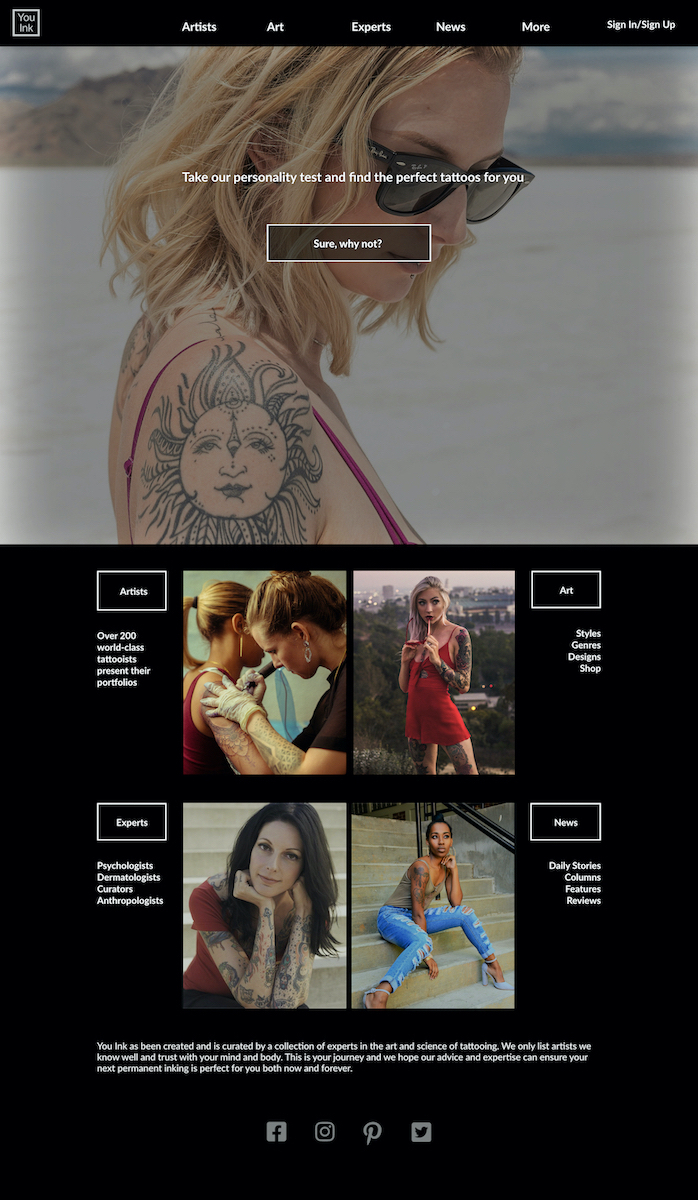
The clickable prototype by this stage gets the jobs to be done … done.
But it was a bit of a pig to look at.
Still working with Adobe XD which has come a long way even in the time I’ve been working with it, I applied;
- Gestaltism
- Emotional Design to enhance user engagement
- Grids, spacing, typography, web responsive, mobile first, versioning into native apps
- Design documentation, language systems and hand-off documentation
Research of the high-fidelity clickable prototype;
- Usability Testing with 1-2 young adult participants
- A/B testing using a mix of fresh participants (online) and previous participants
- Peer collaboration
- Mentor collaboration (tips and tricks, focus on accessibility and backlog strategies)
